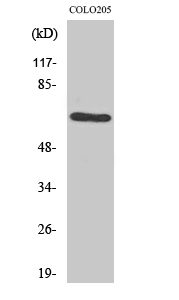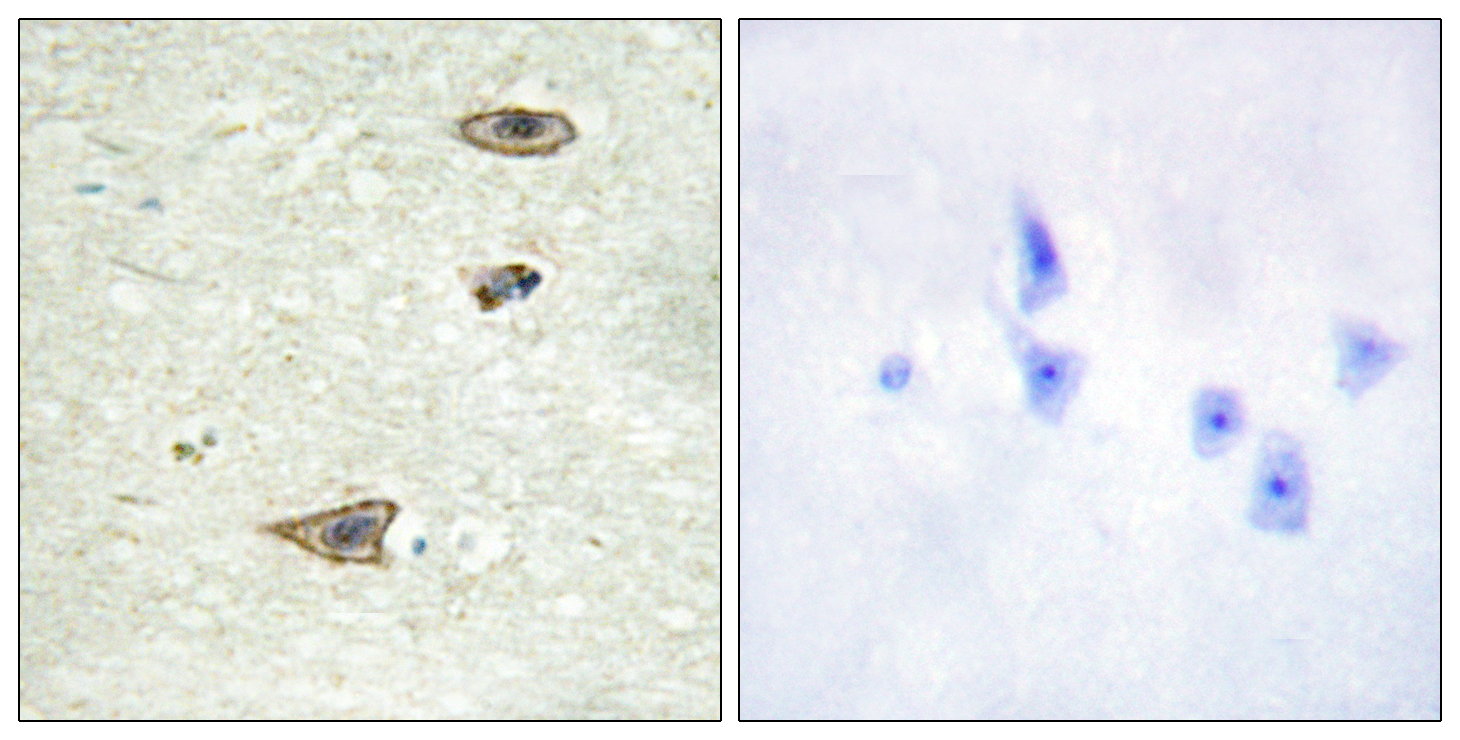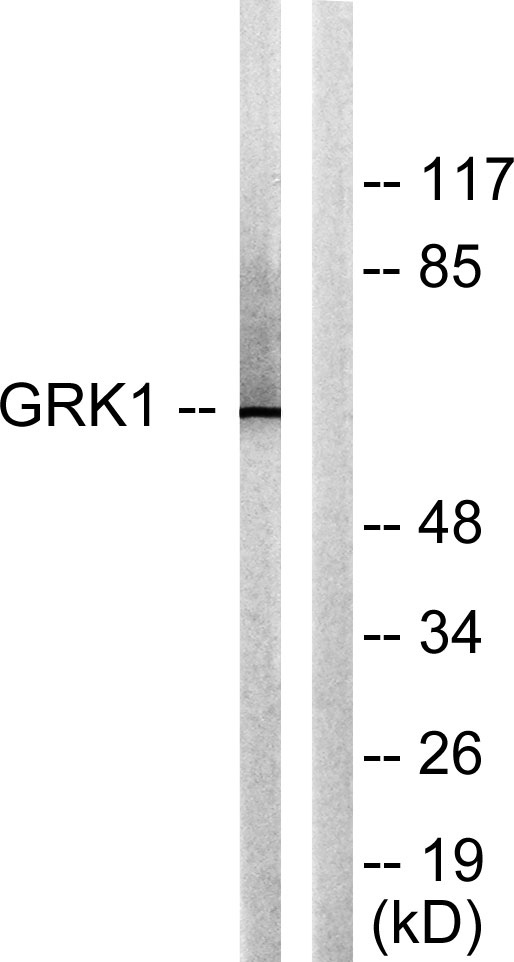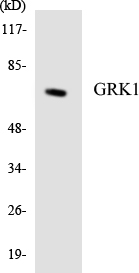GRK 1 Polyclonal Antibody
- Catalog No.:YT2063
- Applications:WB;IHC;IF;ELISA
- Reactivity:Human;Mouse;Rat
- Target:
- GRK1
- Fields:
- >>Chemokine signaling pathway;>>Endocytosis;>>Phototransduction
- Gene Name:
- GRK1
- Protein Name:
- Rhodopsin kinase
- Human Gene Id:
- 6011
- Human Swiss Prot No:
- Q15835
- Mouse Swiss Prot No:
- Q9WVL4
- Rat Gene Id:
- 81760
- Rat Swiss Prot No:
- Q63651
- Immunogen:
- The antiserum was produced against synthesized peptide derived from human GRK1. AA range:6-55
- Specificity:
- GRK 1 Polyclonal Antibody detects endogenous levels of GRK 1 protein.
- Formulation:
- Liquid in PBS containing 50% glycerol, 0.5% BSA and 0.02% sodium azide.
- Source:
- Polyclonal, Rabbit,IgG
- Dilution:
- WB 1:500 - 1:2000. IHC 1:100 - 1:300. ELISA: 1:40000.. IF 1:50-200
- Purification:
- The antibody was affinity-purified from rabbit antiserum by affinity-chromatography using epitope-specific immunogen.
- Concentration:
- 1 mg/ml
- Storage Stability:
- -15°C to -25°C/1 year(Do not lower than -25°C)
- Other Name:
- GRK1;RHOK;Rhodopsin kinase;RK;G protein-coupled receptor kinase 1
- Observed Band(KD):
- 63kD
- Background:
- This gene encodes a member of the guanine nucleotide-binding protein (G protein)-coupled receptor kinase subfamily of the Ser/Thr protein kinase family. The protein phosphorylates rhodopsin and initiates its deactivation. Defects in GRK1 are known to cause Oguchi disease 2 (also known as stationary night blindness Oguchi type-2). [provided by RefSeq, Jul 2008],
- Function:
- catalytic activity:ATP + [rhodopsin] = ADP + [rhodopsin] phosphate.,disease:Defects in GRK1 are a cause of congenital stationary night blindness Oguchi type (CSNBO) [MIM:258100]; also known as Oguchi disease. Congenital stationary night blindness is a non-progressive retinal disorder characterized by impaired night vision. CSNBO is an autosomal recessive form associated with fundus discoloration and abnormally slow dark adaptation.,function:Phosphorylates rhodopsin thereby initiating its deactivation.,online information:Retina International's Scientific Newsletter,PTM:Autophosphorylated.,PTM:Farnesylation is required for full activity.,similarity:Belongs to the protein kinase superfamily. AGC Ser/Thr protein kinase family. GPRK subfamily.,similarity:Contains 1 AGC-kinase C-terminal domain.,similarity:Contains 1 protein kinase domain.,similarity:Contains 1 RGS domain.,tissue specificity:R
- Subcellular Location:
- Membrane ; Lipid-anchor . Cell projection, cilium, photoreceptor outer segment . Subcellular location is not affected by light or dark conditions. .
- Expression:
- Retinal-specific. Expressed in rods and cones cells.
- June 19-2018
- WESTERN IMMUNOBLOTTING PROTOCOL
- June 19-2018
- IMMUNOHISTOCHEMISTRY-PARAFFIN PROTOCOL
- June 19-2018
- IMMUNOFLUORESCENCE PROTOCOL
- September 08-2020
- FLOW-CYTOMEYRT-PROTOCOL
- May 20-2022
- Cell-Based ELISA│解您多样本WB检测之困扰
- July 13-2018
- CELL-BASED-ELISA-PROTOCOL-FOR-ACETYL-PROTEIN
- July 13-2018
- CELL-BASED-ELISA-PROTOCOL-FOR-PHOSPHO-PROTEIN
- July 13-2018
- Antibody-FAQs
- Products Images

- Western Blot analysis of various cells using GRK 1 Polyclonal Antibody

- Immunohistochemistry analysis of paraffin-embedded human brain tissue, using GRK1 Antibody. The picture on the right is blocked with the synthesized peptide.

- Western blot analysis of lysates from COLO205 cells, using GRK1 Antibody. The lane on the right is blocked with the synthesized peptide.

- Western blot analysis of the lysates from Jurkat cells using GRK1 antibody.



